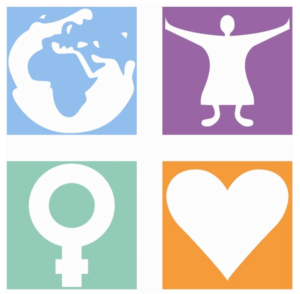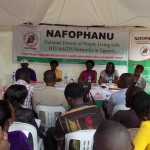Nothing about us without us: Let women and girls lead
Globally, approximately 39 million people were living with HIV by 2022, with 53% being women and girls. In the same year, women and girls accounted for 46% of all new HIV infections. Despite sub-Saharan Africa being the world’s epicenter of the HIV/AIDS response, the full impact of the AIDS problem in East Africa is yet to be realized. In 2022, adolescent girls and young women accounted for more than 77% of new infections among young people aged 15-24 years and were more than three times as likely to acquire HIV compared to their male counterparts.
In Uganda, even when tremendous progress has been made over the last four decades, we have seen Uganda drive innovation, stronger National partnerships, political will with the launch of the Presidential Fast Track Initiative, invest and contribute to research and development for new technologies and innovations in HIV research, communities taking the bull by the horn through various advocacy initiatives aimed at ensuring access to efficacious medicines (including adoption and roll out of DTG), advocating for standard, first class laboratory services and ensuring that services are brought closer to the communities by pushing for the differentiated services of care. These efforts produced tremendous results when we saw the HIV prevalence drop from 18% in the early 80s and 90s to 7.0% in the 2000s and to 5.8%[1] in 2021/2022. We have experienced the beauty of countries coming in to learn from Uganda for various programs.
Despite these efforts, Uganda today on the global map is lagging behind in terms of prevention efforts as it is depicted by the 90% performance for the first 95, the skyrocketing new infections with the young people contributing a significant 28,000 new infections annually. The dark end of the response is heart breaking with again the country failing to ensure that the 1.4 million people living with HIV are virally suppressed with a 94% target achievement registered for the third 95. This performance gets worse as we get the sub-population and age disaggregates.
For over the decades of the response, women and girls still continue to bear the brunt of the epidemic. New infections among women are double to that of men (30,000 new infections are registered among women compared to the 16, 000 among men), AIDS related deaths among women stand at 860,000 compared to 500,000 among men[2].
The daunting performance across the continuum of care is attributed to the fact that women have been left behind for so long when it comes to HIV prevention options but even when some options were available, the cultural, religious, norms would not allow women to freely initiate let alone negotiate safe sex. Women and girls have a higher vulnerability index (Vulnerable to sexual and emotional violence) compared to their male counterparts; most times are economically dependent on men putting them at higher risk for HIV infection. Whereas with care and treatment, the biggest monster that affects women response to care and treatment interventions is stigma and discrimination-even with advancements in technology, traditionally our societies still give HIV a female face-as we have seen with many marriages or relationships women knowing their status first because of their good health seeking behaviors automatically are stereotyped them as the one who brought the disease or the curse to the family
With all the above interventions in place for effective implementation, involvement of communities has always been key. But over the decades also communities have made tremendous contribution by actively and directly being involved in implementation. And this goes without recognizing and applauding the United National Joint AIDS Program for making the first step towards ensuring the role of communities is not just a contribution but rather they are the first step, frontline stakeholders who should be leading the response by providing a framework for deliberating ensuring community inclusion, involvement, and above all leadership as enriched in their 30, 60, and 80[3] Global UNAIDS targets. This does not go without mentioning that while UNAIDS set a precursor, Global partners like PEPFAR adopt and domesticate these targets in their new 5×3 strategy which seriously emphasizes Community leadership as a critical enabler in the response with emphasis on community interventions such as the Community led Monitoring, investment in community led organisations to lead on Community led treatment literacy efforts and demand generation activities. Not forgetting the Global Fund resilient community systems strengthening. These few examples of programs led by communities are a clear demonstration that communities are not just mere recipients of care but also can delivery impact for their own sake and those around them. The community worries that some of these efforts will be in vain when they cannot be sustained because most of the community led interventions are donor supported.
While the 16 Days of Activism campaign continues to call for investment to end violence against women and girls, ICWEA also calls for action the various stakeholders on this World AIDS Day to:
Government of Uganda
- Expand options for HIV prevention through funding for the newly approved HIV prevention and treatment products.
- Strengthen community health systems.
- Strengthen collaboration and partnerships.
- The country government to put in place mechanisms for social contracting communities to lead the response for sustainability
- The government also institutionalize community led responses into government health sector plans and budgets for continuity and sustainability
- Capacitate communities to take the lead.
- Involve and engage more women and girls in HIV research and development.
- Implement inclusive people-centered programs and policies.
- Economically empower communities for greater autonomy and promote self-care for HIV prevention.
Multi-lateral and other international allies/partners
The United States Congress to reauthorization PEPFAR. PEPFAR has made a significant contribution to the HIV response. Suspending it will have a big impact on the community. This is not just limited to the support to the communities but the support to the country government to deliver 3rd line to about 1,200 clients who have no hope beyond 3rd line, strengthening capacity of the National epidemic through robust support to laboratory systems supply chain and ensuring that there is a wholistic approach of handling the epidemic at a multi-epidemic level to include non-communicable diseases among people living with HIV, Advanced HIV Disease.
Country governments, international community to rally behind affected communities to demand for re-authorization of PEPFAR.
In a nutshell, women and girls are the backbone of care support in their families and communities, providing unpaid and often undervalued work in caring for children, the sick, the elderly, and the disabled. This potential can be leveraged to increase their involvement and leadership in preventing HIV.
[1] UPHIA 2020/2021
[2] Uganda AIDS Commission Website
3 Ensure community-led organizations deliver 30% of testing and treatment services, with a focus on HIV testing, linkages to treatment, adherence and retention support, and treatment literacy.
Ensure community-led organizations deliver 80% of HIV prevention services for people from populations at high risk of HIV infection, including for women within those populations
Ensure community-led organizations deliver 60% of programmes to support the achievement of
societal enablers



